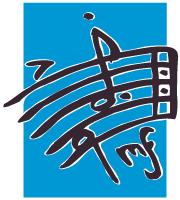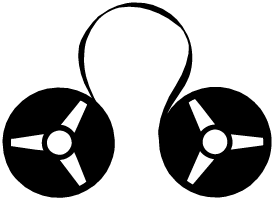Computer-Based Recording
Macintoshes, Windows PCs, or dedicated audio workstations can be used to digitally record, edit, and output sound. The discussion below will focus on Macintoshes, with a note at the end for Windows PCs.
Overview
There are five steps to compiling music with a computer:
- using a CD-ROM player to copy audio CD tracks onto your hard disk;
- editing and compressing the sound files on disk (optional);
- cataloging your songs;
- sequencing your songs for playback; and
- recording your sequences to CD or to audio tape.
Importing Tracks From Audio CDs
 Any Quicktime-aware program (e.g. Apple's QuickTime
Player, freeware) can copy a track from an audio CD to your hard disk
(or Jaz disk, etc.). Importing the track as a 16-bit, 44.1 kHz, stereo file
requires 10 MB/minute of storage before compression. Fortunately, hard disks
are incredibly cheap these days--a 20 GB internal EIDE drive retails for
about $200. To save disk space, sound files may be compressed by a factor
of four (IMA compression) or by a factor of about 10 (MP3 compression),
as discussed below.
Any Quicktime-aware program (e.g. Apple's QuickTime
Player, freeware) can copy a track from an audio CD to your hard disk
(or Jaz disk, etc.). Importing the track as a 16-bit, 44.1 kHz, stereo file
requires 10 MB/minute of storage before compression. Fortunately, hard disks
are incredibly cheap these days--a 20 GB internal EIDE drive retails for
about $200. To save disk space, sound files may be compressed by a factor
of four (IMA compression) or by a factor of about 10 (MP3 compression),
as discussed below.
Editing And Compressing Audio Files
You may wish to fade, normalize, or alter the pitch of your audio files. Macromedia's SoundEdit 16 (commercial) is useful for fading; Tom Erbe's SoundHack (shareware) is good for normalization; and Strata's VideoShop (commercial, but once bundled free with Macs) is handy for changing pitch. Note that peak-volume normalization will give all your sound files the same peak volume (0 dB), but not the same average volume. This means that some songs will still sound louder than others.
You can use Apple's QuickTime Player to compress audio files in IMA format. IMA compression is a fast, lossy scheme that reduces your audio file's size by a factor of exactly four. Its sound quality is quite good, and is comparable to that of minidiscs. (In A/B comparisons, I found that people couldn't reliably distinguish IMA-compressed sound from uncompressed sound.) Another option is to use MP3 audio compression, which requires more computing power, but achieves about 10:1 compression with often-undetectable audible loss.
Cataloging Songs
You can assemble a database of your songs with a spreadsheet, or by using a dedicated music cataloging program such as Matthias Zenger's MacBPM Manager (freeware). The latter measures a song's tempo when you tap its beat on your keyboard.
Sequencing Songs
Ethan Funk's MacAssist (shareware) and Norman Franke's SoundApp (freeware) each let you create sequences of audio files to play on your computer.
Recording To Tape Or CD
You can record your computer's audio output with a tape deck. Or, using a CD recorder, you can write your audio files to a blank CD-Recordable (CD-R) that can be played in most ordinary audio CD players. CD recorders bundled with Adaptec's Toast software cost less than $300. Note that you will have to uncompress your audio files before writing them to a regular (Red-Book format) audio CD-R. However, there may be a stand-alone device that plays MP3s from a data-format CD-R.
An Alternative: Playing Songs From Your Computer
If you permanently install a computer in your ballroom, or regularly bring a laptop computer to dance events, you can use a program like MacAssist or SoundApp to play sound files directly from your computer's hard disk. A local studio (the Allegro Ballroom in Emeryville, CA) has written custom software for this purpose, and uses a permanently-installed computer to play music at its dance parties.
Windows Software
While most of my experience has been with Macintosh audio software, Windows users may be interested in Chris Craig's GoldWave digital audio editor (shareware, Windows only).